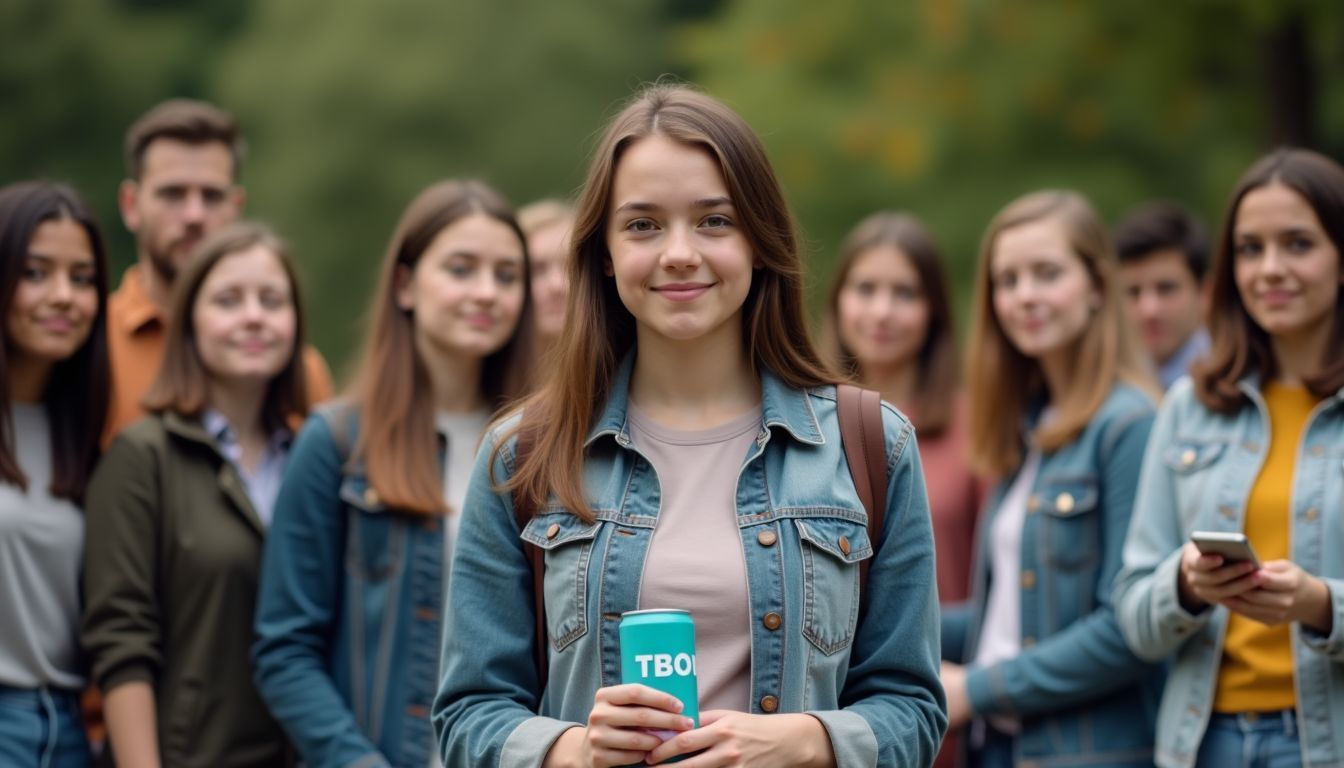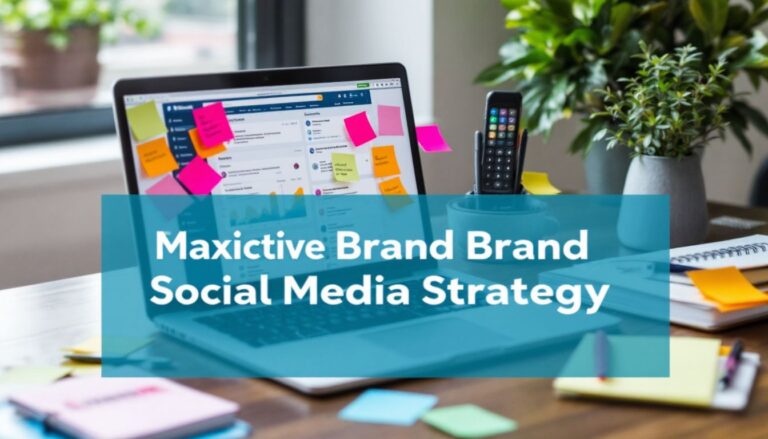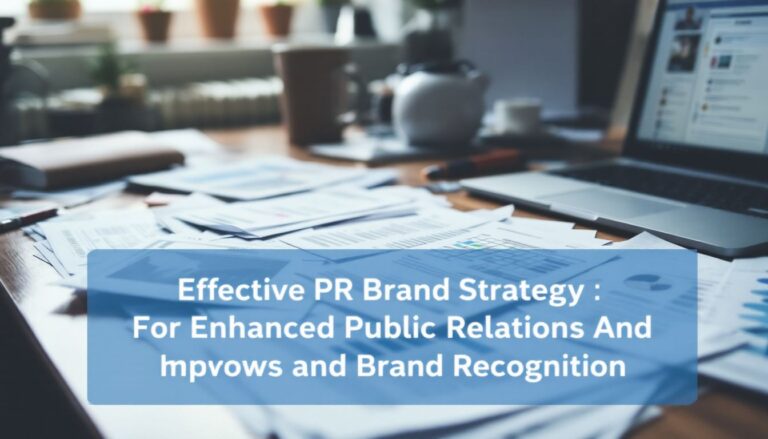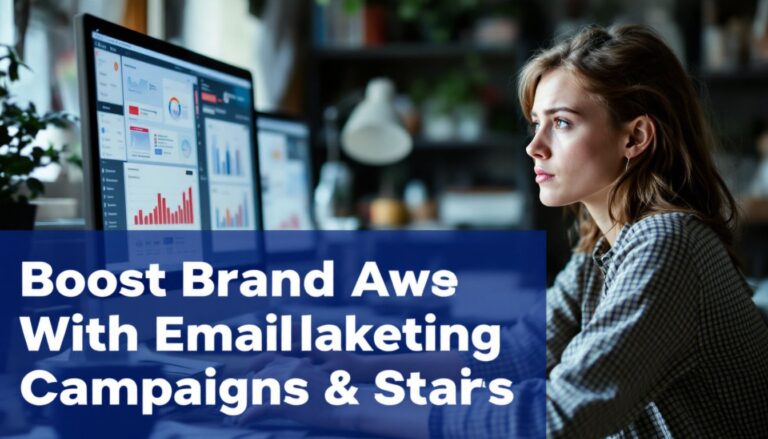Do you find it tricky to create influencer campaigns that boost brand awareness and engagement? You’re not alone. I’ve had this challenge too. After looking at current trends, I learned 81% of social marketers agree influencer marketing is key for their strategy. 3 In this post I’ll share real examples of great influencer marketing from brands like Gymshark, Dunkin’, Dove, and others to help you build strong campaigns too. 1 Keep reading for fresh ideas to inspire your next campaign! 2
Key Takeaways
- 81% of marketers now see influencer marketing as key to their plans—successful campaigns boost customer loyalty by around 87%.
- Topicals invited 18 different influencers to Bermuda and gained over 3 million impressions; Dunkin’ teamed up with Charli D’Amelio, increasing sales by 45%.
- Gymshark’s “66 Days Challenge” created 1.1 million posts, proving lasting ambassadors beat one-time sponsored posts.
- Nano-influencers (with only 1,000-10,000 followers) have the highest engagement—3.69%—and charge as little as $10-$100 per post.
- Pairing brands with influencers who share their values matters more than follower numbers—like Flock Freight did with Steve Burns from Blue’s Clues, winning campaign awards along the way.
What Is an Influencer Marketing Strategy and Campaign?

Influencer marketing is, basically, a partnership between brands and people with big social media followings. It helps brands reach new audiences in a real, genuine way—often better than typical ads.
A clear strategy involves figuring out who to partner with, what type of content to create, and how you’ll measure success. The benefits speak for themselves: it increases customer loyalty by 87%, brand awareness by 89%, and even improves overall brand image by 87%. 2 Plus, 81% of social media experts now see influencer marketing as an essential part of their strategy.
Strong campaigns combine genuine content with real audience connections—this is key. Choosing influencers who truly align with your brand values matters far more than selecting someone with high follower numbers alone.
Content should naturally fit each influencer’s personal style and still highlight the value of your product. This balance between trust and visibility draws many brands to invest in social media partnerships rather than traditional ads. 1
Types of Influencer Marketing Campaigns
I’ve noticed lots of brands using different influencer strategies to meet their marketing targets. Here are some popular tactics you can try out:
- Sponsored Posts – Brands pay influencers to create posts showing their products, usually tagging partnerships clearly using hashtags like #ad or #sponsored.
- Giveaways and Contests – 65% of marketers run these campaigns, asking followers to like, comment, or tag friends to win prizes. Brands quickly boost follower counts and collect user info this way. 2
- Product Collaborations – About 62% of marketers partner with influencers to create unique products. One great example: a beauty guru made her own makeup palette with a popular cosmetics brand.
- Affiliate Marketing – Roughly 57% of marketers use this model, where influencers earn commissions from sales linked to their special codes or URLs. It’s useful for clearly measuring direct returns.
- Account Takeovers – Influencers manage and post on a brand’s social media accounts for a day, giving followers new and interesting content from a fresh perspective.
- Brand Ambassadorships – These long-term deals let influencers regularly showcase products, building trust and familiarity with their followers over time.
- Unboxing Videos and Reviews – Influencers film themselves opening packages and testing the products. Followers relate easily, enjoying natural and honest reactions.
- Pre-release Content – Influencers get early product access and share sneak previews. This builds excitement and can significantly boost launch day sales.
Let’s check out real-life examples showing how these influencer tactics successfully work in marketing campaigns.
Top Influencer Marketing Strategy Examples
Let’s look at some top brands crushing the influencer game – from skincare to shipping companies – and see what makes their campaigns so darn good!
Topicals
I loved seeing how Topicals celebrated their third anniversary with that standout campaign in Bermuda. They invited 18 diverse influencers on an entirely BIPOC-sponsored trip—which definitely got people talking. 3 Using smart hashtags like #TopicalsTakesBermuda and #TopicalsTurns3—they easily tracked their success, gaining 3 million impressions and 5,000 new followers across TikTok and Instagram.
It shows how choosing the right influencers can quickly boost your skincare brand’s reach. Plenty of companies try this strategy, but few match the way Topicals balances genuine diversity with clear marketing goals.
Gymshark
Gymshark nails influencer marketing through their savvy brand ambassador approach. Their “Gymshark Athletes” give genuine product reviews that spread quickly across social channels.
TikTok influencer @SopheAllen, for instance, shared her Black Friday finds with discounts hitting up to 60% off. Another big hit was Gymshark’s “66 Days Challenge”—it exploded online, gathering 1.1 million posts under the hashtag #gymshark66. 4
What sets Gymshark apart is their commitment to lasting, genuine connections with influencers—not just quick, single posts. The brand uses real personal stories of fitness journeys to engage their fans on a deeper level.
They choose ambassadors that truly reflect their core values and have followers who really rely on their advice. This approach expands their reach, targeting folks genuinely into fitness and fashion.
Gymshark’s winning formula blends relatable stories and product mentions seamlessly—encouraging fans to get moving themselves. 4
Now let’s shift gears and check out how Dunkin’ tackles influencer marketing differently.
Dunkin’
While Gymshark partners with fitness pros, Dunkin’ chooses pop culture stars instead. Take the “America Runs on Munchkins” campaign—it grabbed attention right away. They brought Ben Affleck and Ice Spice together at the MTV Video Music Awards…smart move, got everyone buzzing! 6 And their partnership with TikTok’s Charli D’Amelio kicked things up another level, pushing sales up 45%.
Downloads of their app shot up 57%, and they added 3 million fans on TikTok. 5 Dunkin’ proves coffee brands can tap pop icons to connect with younger folks on social media.
La Roche-Posay
La Roche-Posay really nailed it with their U.S. Open event—got everyone talking. They had product testing stands, skin scanners, the whole deal. And that smart setup brought in an impressive $13.9 million in media value. 7 Plus, their clever hashtag #SkincareRoutine generated another $2.2 million—all from social buzz alone.
Picking the right influencers helped a ton. Partners who posted about the event saw their average media value rise—from around $16.5k up to nearly $20k each. 7 La Roche-Posay aced the match between real-world experience and digital content, making the campaign grow fast across social platforms.
A bit of thoughtful planning, plus smart digital moves, gave the skincare brand huge visibility in just one event.
Joybird
Skincare brands like La Roche-Posay focus on specific skin concerns—but furniture companies like Joybird excel at influencer marketing. For instance, Joybird teamed up with @ChrissaSparkles to highlight their Barbie Dreamhouse furniture line online.
It worked out great, mostly because their styles aligned so closely. 8
On Instagram and TikTok, the campaign drew tons of likes, comments, and attention. Joybird chose the ideal influencer, someone who truly spoke to the right crowd. Matching the right personality to your brand values clearly boosts engagement and brings in real sales.
Bright, eye-catching posts made people pause mid-scroll to notice these unique furniture pieces. 9
Flock Freight
I really enjoyed how Flock Freight grabbed attention with their “Define Your Load” campaign, featuring Steve Burns from Blue’s Clues—winning a Cannes Lion award in June 2023! 9 This smart collaboration combined nostalgia and shipping logistics, drawing plenty of media coverage.
Burns broke down logistics terms into easy-to-understand ideas, just as he taught things to kids on his old TV show.
The big success behind this influencer move shows that choosing the right person is way more important than having millions of followers. Flock Freight skipped trendy fitness celebrities or fashion influencers; instead, they went for someone who made their brand clear and reliable.
Their social media posts earned strong interaction because they felt relaxed, entertaining, and actually helpful to their target customers. 10
Dove
Flock Freight handles business logistics—but Dove takes a totally different path, focusing on powerful social impact campaigns. Dove shines in beauty marketing, sharing body-positive messages that reach millions.
For example, its 2022 campaigns—#PassTheCrown and #DetoxYourFeed—got more than 1 billion impressions. Plus, the brand saw a 20% rise in engagement rates. 12
Then there’s Dove’s #ArmsUp campaign—which reached 1.4 million users and generated $417,000 in earned media value. 11 What stands out most about Dove’s strategy is the mix of social media influencers with genuine body inclusivity.
Dove doesn’t just promote beauty products; it pushes back against traditional beauty standards through smart influencer partnerships. This approach makes Dove’s content relatable and honest, building real trust with followers across many channels.
Fiji Water
Switching gears from Dove’s positive body messages—let’s check out another brand that gained attention with fitness influencers.
Fiji Water partnered up with popular fitness pro Danielle Bernstein for a creative digital campaign. I enjoyed their clever approach—placing Fiji bottles right into the workout moves shown in the videos.
Short clips highlighted the importance of hydration during exercise, and fans got a unique discount code, which made it even better. 13
That campaign felt authentic because the Fiji bottles weren’t just placed randomly. They became part of the actual fitness routines, making hydration a key part of each move. Social media followers loved it too, quickly sharing these videos, increasing the brand’s reach.
That exclusive discount code offered the company clear data on how effective Bernstein’s promotion was for sales. Workouts naturally connect with hydration, so this combo felt genuine—not awkward or forced. 14
Selecting the Right Influencers for Your Campaign
Picking the right social media stars can make or break your marketing plan – find out how to match each type with your brand goals in our full guide!
Mega or Celebrity Influencers
I partner often with mega influencers—those stars on Instagram and YouTube with millions of followers. 15 Sure, the big names offer huge reach for brands, but the cost goes up too.
Working on campaigns with influencers like fitness celeb Danielle Bernstein taught me a few things… They definitely connect with huge audiences, but the engagement rates aren’t always the best. 15 Your ROI here really depends on campaign goals. Mega influencers crush it for brand awareness, though they might not drive as many direct sales as smaller creators typically do.
Big-name influencers quickly boost consumer trust in products, much faster than traditional ads ever could. 16
Macro-Influencers
Let’s shift focus from celebrity giants—to macro-influencers who really know how to boost marketing results. These social media figures usually have between 100,000 and 1 million followers.
Brands love them for their ideal mix of audience size, trust, and influence. Martha Stewart, for instance, partnered with Capital One and delivered effective sponsored posts that increased brand appeal. 17
Macro-influencers let me zero in on specific audiences better than big-name stars. Their content usually feels relatable and natural to followers. They attract strong engagement numbers, spreading campaigns across larger audiences.
For midsized marketing budgets, macro-influencers give solid ROI, minus the celebrity-level pricing. Brands often choose these creators as longer-term ambassadors, instead of single sponsored posts. 14
Micro-Influencers
Stepping down from big stars to micro-influencers brings huge benefits for brands. Micro-influencers usually have between 1,000 and 100,000 followers—small numbers, big impact. 18 These followers genuinely care about the posts and opinions shared.
People view micro-influencers as everyday folks, not famous people paid to promote products. That level of trust gives their recommendations extra punch over traditional ads.
Audiences respond to micro-influencer posts with more likes, comments, and shares. They’ve built real connections and genuine communities. Such high engagement makes micro-influencers perfect for brands trying to reach certain groups.
Plus, the influencer’s natural style avoids feeling like a forced sales push—it’s real, honest content.
For instance, brands like Topicals and Gymshark have worked with these smaller creators—and seen impressive outcomes. Sometimes going smaller really is smarter.
Nano-Influencers
I really enjoy using nano-influencers in client campaigns. These social media users have smaller follower counts—between 1,000 and 10,000—but offer powerful reach with an impressive 3.69% engagement rate. 19 That’s far higher than larger influencers usually get. From personal experience, they deliver stronger marketing impact at lower prices too—generally just $10 to $100 per post.
Nearly 70% of brands now prefer using these smaller creators. Their tight-knit follower groups are loyal and trust their recommendations. This makes nano-influencers ideal for brands needing genuine connections at reasonable costs.
How Can Effective PR Strategies Enhance Influencer Marketing Campaigns?
Effective PR strategies can significantly enhance influencer marketing campaigns by creating a cohesive narrative that aligns with both brand values and influencer personalities. A robust pr brand strategy ensures that messaging is consistent, fostering trust among audiences and maximizing engagement. Ultimately, this synergy drives impactful results and amplifies brand reach.
Conclusion
Great influencer campaigns start with smart planning and choosing the right people. Brands such as Topicals, Gymshark, and Dove prove authentic content clicks with audiences. Setting clear goals matters—maybe it’s driving more sales, boosting brand awareness, or building customer trust.
Matching your brand values closely with an influencer’s audience can really lift results. If you’re new to influencer marketing, try starting small—micro-influencers often bring stronger engagement and cost less than big-name celebs.
References
- ^ https://www.firework.com/blog/influencer-marketing-campaign-examples
- ^ https://scrunch.com/blog/13-types-of-influencer-marketing-campaigns-to-complement-your-darketing-strategy
- ^ https://www.getsaral.com/academy/topicals-influencer-marketing-breakdown
- ^ https://www.getsaral.com/academy/influencer-campaign-examples (2025-03-20)
- ^ https://lemon.co.id/articles/know-how-dunkin-donuts-influencer-marketing-succeed/ (2022-11-25)
- ^ https://www.engagebay.com/blog/dunkin-donuts-marketing-strategy/ (2025-01-17)
- ^ https://www.tribedynamics.com/blog/influencer-marketing-la-roche-posay-spotlight
- ^ https://trackier.com/blog/influencer-marketing-examples/
- ^ https://sproutsocial.com/insights/influencer-marketing-examples/
- ^ https://foreignerds.com/influencer-campaign-examples-new/ (2023-08-30)
- ^ https://www.meltwater.com/en/blog/influencer-inspiration-dove
- ^ https://www.socialinsider.io/blog/dove-social-media-strategy/ (2023-10-24)
- ^ https://afluencer.com/examples-of-influencer-marketing-campaigns/
- ^ https://inbeat.agency/blog/influencer-marketing-examples
- ^ https://journals.sagepub.com/doi/10.1177/00222437231210267 (2023-10-15)
- ^ https://sproutsocial.com/insights/influencer-marketing/
- ^ https://www.meltwater.com/en/blog/influencer-campaign-examples
- ^ https://www.researchgate.net/publication/370939732_The_Power_of_Personal_Connections_in_Micro-Influencer_Marketing_A_Study_on_Consumer_Behaviour_and_the_Impact_of_Micro-Influencers (2024-10-22)
- ^ https://influencity.com/blog/en/nano-influencers (2024-03-20)







